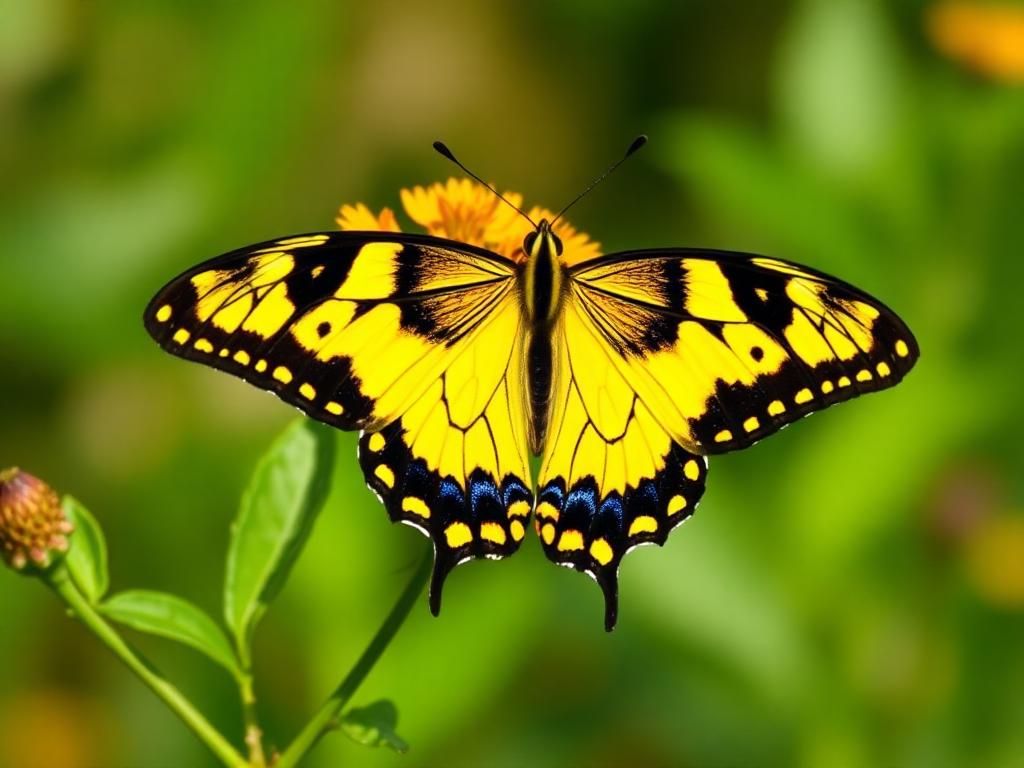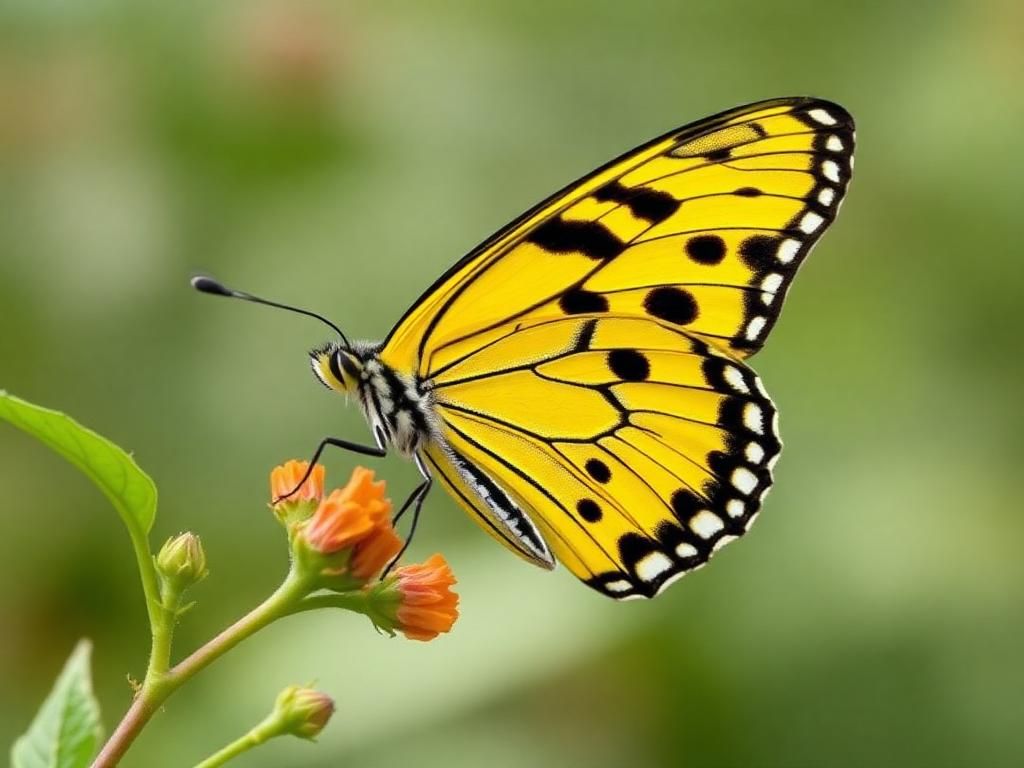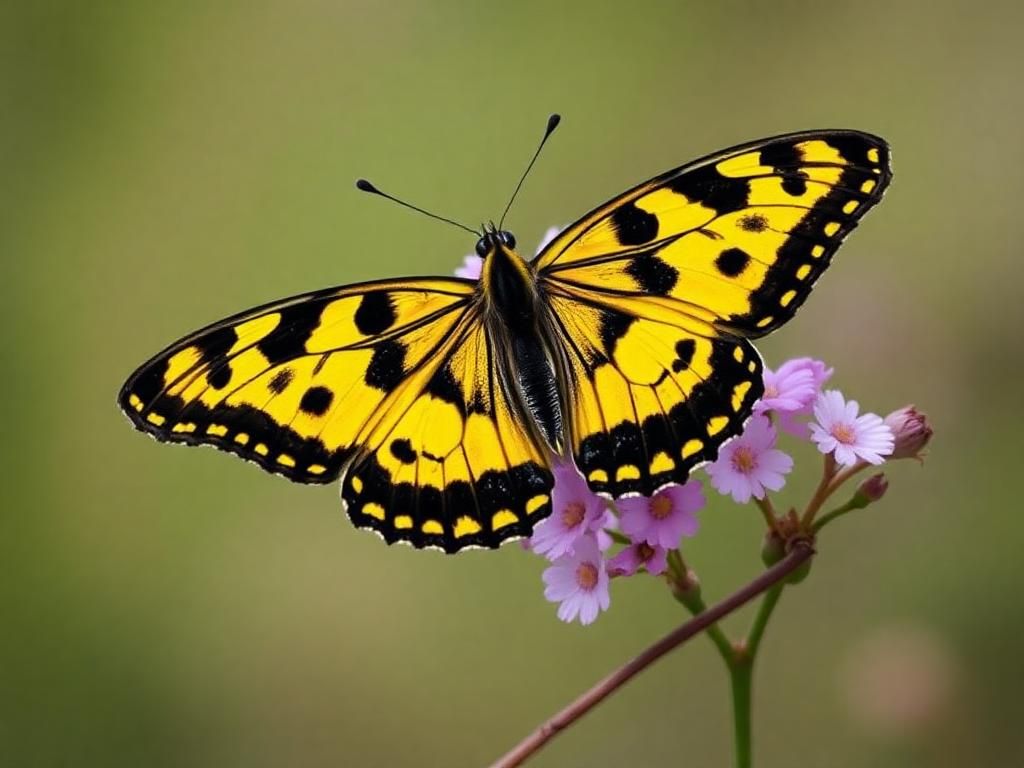Butterflies are some of nature’s most captivating insects, flaunting brilliant colors and intricate patterns that capture the imagination of both hobbyists and scientists alike. The vibrant visuals are not just beautiful but also serve vital ecological functions, from pollination to sustaining food webs. One of the most fascinating specimens in the butterfly world is the yellow butterfly with black patterns. These butterflies exemplify a spectacular combination of coloration that plays a critical role in their survival and reproduction. Studying these fascinating insects’ coloration provides insight into their behavior, habitat requirements, and even their evolutionary strategies.
Understanding Butterfly Coloration
The Role of Color in Nature
Coloration serves multiple purposes in the life of a butterfly. One of the most important functions is camouflage, which allows them to blend into their environment and evade predators. For many yellow butterflies with black patterns, this blend of colors can mimic the appearance of flowers or trees, making it difficult for birds and other predators to spot them.
Another key role of color is in mate attraction. Bright colors often indicate health and vitality, both of which are attractive to potential mates. The eye-catching appeal of yellow and black can signal to mates that an individual is strong and genetically fit.
Additionally, yellow and black coloration can also serve as warning signals. Many insects in nature use this coloration scheme as a form of aposematism, which indicates that they might be toxic or unpalatable. This warning can deter predators from attempting to consume them, allowing safer existence in their natural habitats.
How Coloration is Achieved
To fully comprehend the strategies behind the coloration of butterflies, it’s essential to recognize the difference between pigmentation and structural coloration. Pigments are chemical compounds that provide color, while structural coloration results from the microscopic structure of the scales on a butterfly’s wings, manipulating light to create iridescent effects.
The brilliant yellows and blacks seen in these butterflies often come from natural pigments. For example, the yellow pigment can typically arise from carotenoids, which butterflies obtain from consuming specific leaves or flowers. Conversely, the vibrant blacks are often the result of melanin.
Genetic factors also drive the manifestation of these colors and patterns. Variations in pigmentation genes result in the diverse appearances we see across butterfly species. Research into these genetic elements sheds light on butterfly evolution and adaptation with regard to their coloration.
Common Species of Yellow Butterflies with Black Patterns
Several species exhibit the striking yellow butterfly with black pattern. Here are a few notable examples:
The Eastern Tiger Swallowtail (Papilio glaucus)
This butterfly is characterized by its yellow wings adorned with black tiger-like stripes. They are predominantly found across the eastern United States, favoring habits like open woodlands and gardens. The Eastern Tiger Swallowtail thrives on nectar from a variety of flowers, playing an essential role in pollination.
The Black Swallowtail (Papilio polytes)
The Black Swallowtail is another stunning example, showcasing a vivid yellow and black palette with striking blue spots. They inhabit gardens, fields, and coastal areas in North America. These butterflies are known for their agile fluttering and are typically observed in areas rich with nectar sources like parsley, dill, and fennel.
The Common Yellow Swallowtail (Papilio machaon)
Also known as the Old World Swallowtail, this butterfly can be identified by its bright yellow wings with black edges. It is found throughout Europe, Asia, and North America and is often drawn to wildflowers. Its diet as a caterpillar includes a variety of host plants, marking its adaptability.

The Clouded Sulphur Butterfly (Colias philodice)
This butterfly has a more subdued yellow and black pattern compared to the swallowtails but is nonetheless beautiful. Commonly found in meadows and open fields across North America, they feed on various clover species. Their characteristic yellow wings feature a black margin that helps distinguish them from other similar species.
Habitat and Distribution
Preferred Environments
Each species of yellow butterflies with black patterns displays unique habitat preferences. They typically thrive in environments rich in nectar sources and suitable host plants for their caterpillars. Common habitats include:
– Meadows
– Open woodlands
– Coastal regions
– Gardens
However, climate change poses a real threat to these habitats, disrupting the delicate balance of ecosystems. Rising temperatures and changing precipitation patterns can alter the availability of crucial plants upon which these butterflies rely.
Global Distribution
The geographical range of the yellow butterfly with black patterns varies by species. For example, the Eastern Tiger Swallowtail can be found from Canada to Florida, while the Common Yellow Swallowtail is more widely distributed across Europe and Asia.
Migration is another fascinating aspect of these butterflies’ existence. Some species, like the Monarch butterfly, undertake extensive migrations, while others might stay local. Seasonal variations affect their breeding patterns and migration, as they seek optimal environmental conditions for survival.
The Life Cycle of Butterflies
Stages of Development
The life cycle of butterflies is an incredible journey that includes four distinct stages: egg, larva (caterpillar), pupa (chrysalis), and adult butterfly. Coloration often changes through these stages. For instance, the caterpillars’ colors might serve as camouflage among leaves, while the bright adult colors signify maturity and readiness to attract mates.
Metamorphosis Process
Metamorphosis is a miraculous transformation that occurs within the chrysalis stage. During this process, the caterpillar breaks down its own tissues and reorganizes to emerge as a butterfly. Environmental conditions, such as humidity and temperature, significantly influence this process. It is during metamorphosis that the vibrancy of the adult butterfly’s color develops, influenced by genetic coding and environmental factors.
Threats to Yellow Butterflies with Black Patterns
Natural Predators

While the colors of yellow butterflies with black patterns serve many functions, they are often on the menu for a variety of natural predators, including birds, frogs, and spiders. Butterflies employ several evasion strategies, such as flying erratically, using mimicry to resemble other less palatable species, or utilizing camouflage to blend into their environment.
Human Impact
Unfortunately, human actions have severely impacted butterfly populations. Habitat destruction due to urbanization leads to the loss of critical ecosystems. Furthermore, the use of pesticides and pollution contributes to declining numbers of various butterfly species, including our beloved yellow butterflies with black patterns. Conservation efforts are crucial in reversing these adverse effects. Simple individual actions like planting native flowers and avoiding pesticide use can make a significant difference in supporting butterfly habitats.
Fascinating Facts About Yellow Butterflies with Black Patterns
These butterflies are not just beautiful; they exhibit intriguing behaviors and cultural significance as well. For instance, many indigenous cultures consider butterflies a symbol of transformation and renewal. Interestingly, some myths attribute mystical qualities to yellow butterflies, believing they carry messages from the spirit world or symbolize hope and good fortune.
Conclusion
Yellow butterflies with black patterns represent not just aesthetic beauty but also play vital roles within their ecosystems. Their survival depends on maintaining healthy environments, emphasizing the importance of conservation. Each observation of these exquisite creatures serves as a reminder of the diversity and richness of nature, urging action toward protecting their habitats and understanding their behaviors.
References
– Butterfly Conservation – www.butterfly-conservation.org
– National Wildlife Federation – www.nwf.org
| Species | Characteristics | Habitat | Diet |
|---|---|---|---|
| Eastern Tiger Swallowtail | Yellow with black stripes | Open woodlands and gardens | Nectar from flowers |
| Black Swallowtail | Yellow with black and blue spots | Fields and gardens | Herbs like parsley and dill |
| Common Yellow Swallowtail | Bright yellow with black edges | Open habitats across Europe and Asia | Nectar from various flowers |
| Clouded Sulphur Butterfly | Soft yellow with black borders | Meadows and fields | Clovers and wildflowers |
FAQ
What adaptations help yellow butterflies survive?
Yellow butterflies often have coloration that helps with camouflage and warning signals, making them less appealing to predators.
Are all yellow butterflies with black patterns poisonous?
Not all yellow butterflies are poisonous, but many use their coloration to mimic toxic species.
What do yellow butterflies eat?
They primarily feed on nectar from various flowering plants and also have specific host plants for their caterpillars.
How do I attract yellow butterflies to my garden?
Plant native flowers that bloom throughout the season and provide host plants for caterpillars.
What is the lifespan of a yellow butterfly?
The lifespan varies by species but typically ranges from a few weeks to a few months.
How can climate change affect yellow butterfly populations?
Changes in temperature and precipitation can disrupt their habitats and food sources, leading to declining populations.
Are there conservation programs for yellow butterflies?
Yes, many organizations focus on butterfly conservation and habitat restoration, such as habitat preservation and public education.
Do yellow butterflies migrate?
Some species do migrate, following seasonal routes to find favorable conditions and habitats.
What is the best time to observe yellow butterflies?
Warm sunny days during the summer months are typically the best times to observe these butterflies in action.
Can I help preserve butterfly habitats in my area?
Absolutely! Planting native flowers, reducing pesticide use, and creating butterfly-friendly landscapes can significantly aid conservation efforts.
